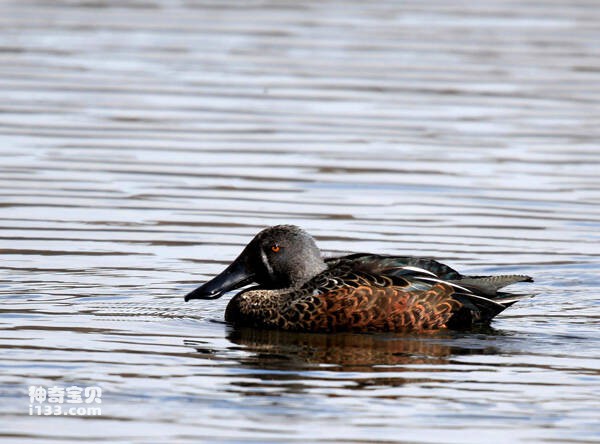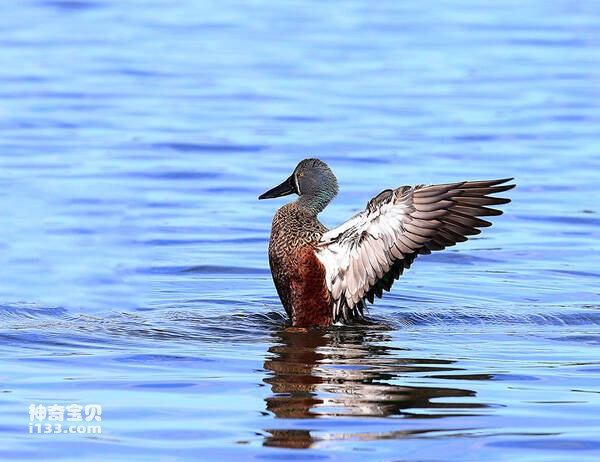Anas rhynchotis
IUCN
LCBasic Information
Scientific classification
- name:Anas rhynchotis
- Scientific Name:Anas rhynchotis,Spatula rhynchotis,Australasian Shoveler
- Outline:Waterfowl
- Family:
Vital signs
- length:46-53cm
- Weight:665-667g
- lifetime:No textual research information is available
Feature
The sexes differ greatly, and the plumage varies with the seasons
Distribution and Habitat
It is found in Australia and New Zealand, including Tasmania and its nearby islands.
Distributed in almost all lowland marshes and freshwater lakes, seasonal shallow shoals, it is a wetland dwelling duck. But there is a clear preference for overgrown swamps and occasional frequent visits to coastal lagoons. It is endemic to Australia and New Zealand.
Appearance
Black-topped Spoonbill is 46-53 cm long and weighs 665-667 g. The sexes differ greatly, and the plumage varies with the seasons. Male ducks in the breeding period of the feathers have a green luster, the top of the feather resembles a black cap, between the mouth and the eyes, in different individuals between the head has varying sizes of white crescent stripes, the neck gray. The central feathers of the tail, back and rump are black. Covered, large pale blue wings with an all-white border. The primary feathers are dark brown, and the secondary feathers are metallic green. Breast feathers are brown with small black and white borders. The rest of the lower body is reddish-brown with black crescents. There are fine white lines on the sides of the abdomen. The bottom is white with brown feathers.
The female duck has a yellow head and neck with dark brown stripes. Black top and black eye. The whole body is light brown, the tail is brown with yellow outer tail feathers. The top and botto
Details
The black-headed Spoonbill (Spatula rhynchotis) is a medium-sized swimming bird in the family Anatidae and the genus Spatula, with two subspecies.

Black-capped Spoonbills are timid and cautious, usually living in small groups, but in the dry season, they can mix with other birds and gather in large groups of hundreds of species. They have a flat beak like a paddle and can feed in the water. The main food is plants and insects.

Black-topped Spoonmouths breed in dry areas, nesting near the coast and spawning season is from August to December. The nest is usually built underground in a dense area of vegetation, but sometimes it is placed in a stump or in a tree hole. 9 to 11 eggs are laid at a time and incubated alone by the female for 25 days. The female ducks alone take care of feeding and swimming training.
Listed on the International Union for Conservation of Nature (IUCN) 2012 Red List of Threatened Species ver 3.1 - Low Risk (LC).
Protect wild animals and eliminate wild meat.
Maintaining ecological balance is everyone's responsibility!








